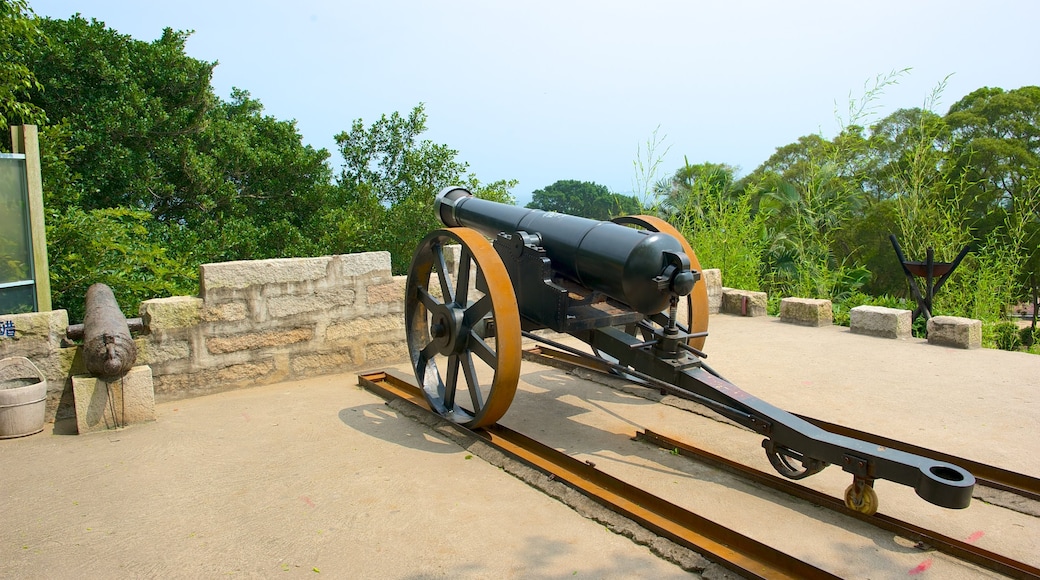Hulishan Cannon Fort is among Xiamen’s most well-known historical sites. Built in the late 19th century, the fort’s architectural style reflects the increasing influence of the West on China. Check out the site’s famous German Krupp cannon and explore the interesting little museum.
The fort was originally constructed in 1894 and was considered to be one of China’s most innovative fortresses at the time. Admire the interesting architecture, which blends European design with Ming and Qing dynasty styles. The foundation is made with a mixture of black camphor tree juice, glutinous rice, brown sugar, lime and sands, which helped it to resist cannon fire. The fort served as the central command of Xiamen’s eight fortresses, playing a major role in the city’s defense against the Japanese in 1900 and 1937.
Don’t miss the fort’s famous 19th-century German Krupp cannon. This massive cannon weighs 87 tons (79 metric tons) and has a firing range of almost 12 miles (20 kilometers). The fort was once defended with two of these enormous cannons, although only one remains today. It’s said to be one of the world’s oldest and largest 19th-century breechloaders.
Just in front of the cannon, find two observation terraces. Rent binoculars to look across the water at the island of Jinmen, which is occupied by Taiwan, but claimed by mainland China as well.
Reserve some time to see the Rongguang Cultural Relics and Treasures Museum, a fascinating exhibit of ancient weaponry and cultural artifacts donated by Singaporean collector Zhang Rongguang. Look for a 2.5-ton (2.3 metric ton) stone collected in Burma, as well as a cannon that’s touted as the smallest in the world. Constructed by the Portuguese, this cannon weighs just 0.5 pounds (0.2 kilograms) and measures 4.3 inches (11 centimeters) in length.
Reach Hulishan Cannon Fort by public bus. It’s located along the coast in the southern part of Xiamen. The fort is open daily and there is an admission fee.


















